Golfstead is reader-supported. When you buy through links on the site, we may earn an affiliate commission at no extra cost to you. Our affiliations include, but are not limited to, the eBay Partner Network and Amazon Associates.
Practically every golfer in existence wants more distance on the golf course. This can be facilitated by strength, swing efficiency and club technology, but it can also be facilitated by the golf ball.
Typical distance golf balls are designed to fly long and straight, particularly with the driver, through various means including low-spin ionomer covers and special dimple patterns meant to minimize drag and maximize lift.
Distance golf balls tend to be most desired by higher handicappers since they are most likely to have slow swing speeds and need help getting the ball airborne, although any golfer can benefit from a distance ball.
The sheer number of options on the market can make the process of choosing the best distance golf ball for you difficult and overwhelming. Fortunately, you’ve come to the right place.
In this guide, we’ll review and compare our picks for the best golf balls for distance across a range of different brands.
Note: Golfstead has tested and/or conducted in-depth research into all of the products featured in this guide. Our editorial process for these rankings takes into account a mix of many factors which may include performance, reliability, usability, value for money, cost, and the general consensus from other users of the product. The list that follows may be reassessed or updated over time.
Our Top Picks For Distance Golf Balls
Based on our own testing, research, and experience, here are our top selections:
- TaylorMade Distance+ Golf Ball
- Callaway Warbird Golf Ball
- Vice Drive Golf Ball
- Wilson Tour Velocity Distance Golf Ball
- Bridgestone e6 Golf Ball
- Srixon Z-STAR XV 8 Golf Ball
- Titleist Velocity Golf Ball
1. TaylorMade Distance+ Golf Ball
The TaylorMade Distance+ is undoubtedly one of the most popular and successful distance balls on the market.
This ball is all about speed. It’s suitable for a wide range of golfers including high, mid and low handicappers, and its soft REACT Speed Core is engineered for easy compression by slower swing speed golfers (despite a medium compression rating of 77).
The two-piece construction consists of the REACT core and a soft ionomer cover. This cover keeps spin down and has enhanced durability with resistance to scuffing and shearing.
Other features of the Distance+ are:
- a 342 aerodynamic dimple pattern that reduces drag
- a built-in alignment aid that helps you line up putts and gives you feedback on your roll
This ball delivers tons of distance on all shots, yet it still provides a good amount of spin and control around the greens. We love how it provides a similar level of performance to high-end balls at a much lower cost.
2. Callaway Warbird Golf Ball
The very tagline of the Callaway Warbird is “designed for distance”. Indeed, this popular ball is engineered for maximum speed through the bag, along with high launch, great feel and control around the greens.
The Warbird has a pretty high compression rating of 90, but the large, high-energy core is very compressible, making it usable for a wide range of swing speeds.
Rounding out the two-piece construction is an optimized ionomer cover which, together with the core, helps enhance feel and control with short irons, wedges and the putter.
The Warbird ball also features Callaway’s proprietary HEX Aerodynamics which reduce drag and increase lift for more carry, distance, and stopping power into greens.
Golfers find the Warbird to provide rock solid performance comparable to much more expensive balls: long and straight off the tee, fairly soft feel, and great short game performance.
3. Vice Drive Golf Ball
The Drive is Vice’s most accessible distance ball. It’s suitable for beginners, high handicappers, and other golfers with low-to-mid swing speeds seeking maximum distance and soft feel.
This ball made the 2020 Golf Digest Hot List, and it was also featured in the golf.com performance golf ball recommendation list. It benefits from high critic and consumer reviews.
The Vice Drive is engineered for softer feel and has a low-mid compression rating of 50. Its simple two-piece construction consists of:
- a large Energy Speed Core (ESC) that reduces driver spin and increases ball speed for low-to-mid swing speeds
- a Surlyn cover that is extremely durable and cut-resistant
Other features of the Vice Drive are:
- a 312 dimple pattern which stabilizes the trajectory and minimizes air resistance
- a KIL alignment aid for better putting performance
According to swing robot tests at an independent laboratory, the latest iteration of the Vice Drive surpasses the previous model in terms of driver distance and wedge spin rates. It also produces more carry and total distance than the Titleist Tour Soft and produces less driver spin.
The Vice Drive ball is at a fantastic price point, and in our experience, it strikes the perfect balance between being firm off the tee yet soft around the greens.
4. Wilson Tour Velocity Distance Golf Ball
The Wilson Tour Velocity Distance is a really great distance ball for better players with medium swing speeds of 90+ mph. It’s designed not only for maximum carry and roll distance, but also for good greenside spin and playability.
The Tour Velocity Distance is not as popular as other balls on this page, but it’s still received very well. It has a compression rating of 85 and a two-piece construction consisting of:
- a high-energy, mild compression core for big distance with long clubs and controllability with mid and short irons
- a hard Surlyn cover that promotes an optimal ball trajectory for maximum distance
The ball has a 400 enhanced aerodynamic dimple pattern. It’s part of a line of golf balls that also include Wilson’s Tour Velocity Accuracy, Tour Velocity Feel, and Tour Velocity Women’s.
This ball is very easy on the wallet. We find that the distance is just outstanding, but it feels quite firm around the greens. It’s also only available in white.
5. Bridgestone e6 Golf Ball
Bridgestone is a renowned golf ball manufacturer, represented by some of the best golfers in the world including Tiger Woods, Bryson DeChambeau, Fred Couples and Lexi Thompson.
Their e6 ball has been around for over 14 years and, with each iteration, has gradually evolved into a soft, affordable distance ball. The latest e6 has optimized its soft feel even further and is designed to produce a softer sound as well.
Engineered to be easy to compress and produce maximum distance on all shots, the e6 has a two-piece construction consisting of:
- a reformulated gradational compression core, firmer on the outside and softer on the inside, that compresses quicker for added distance
- a Surlyn cover with seamless cover technology that optimizes feel and spin
The 330 dimple pattern helps maximize carry as well as provide good spin control around the greens.
The 2023 model is currently available in white and optic yellow. The e6 is generally a very popular best-seller, and the consensus is that it delivers excellent distance and tee-to-green performance for the price.
6. Srixon Z-STAR XV 8 Golf Ball
We understand that there are many golfers out there with fast swing speeds who want a higher compression distance ball. Enter the Z-STAR XV by Srixon, a quality golf ball manufacturer that has been around for decades.
The XV is the speed-focused model of the Z-STAR line and enjoys very high ratings from golfers. It made the 2022 Golf Digest Hot List for golf balls.
The Z-STAR XV is designed for maximum distance off the tee with low spin and a mid-high launch, progressively softer feel as you move to the short irons, and good greenside control, although spin around the greens is not quite as good as the standard Z-STAR.
The compression rating of this ball is 102, so a swing speed of around 100 mph is recommended to use it.
In contrast to the four-piece design of the previous generation, the 2023 version of the Z-STAR XV (the Z-STAR XV 8) has a three-piece construction that consists of:
- a reformulated FastLayer DG Core that transitions dramatically from soft in the center to firm on the outside, leading to more distance than ever off the tee and a high-quality feel
- an extra-thin, thermoplastic urethane cover for Tour-level stopping power around the greens
- a durable Spin Skin+ coating which digs deep into grooves to increase friction and further increase spin with wedges
In addition, a 338 Speed Dimple pattern promotes a penetrating launch and increases lift for maximum carry distance.
The Z-STAR XV is a premium golf ball that many believe is just as good as the Titleist Pro V1x while being more durable and affordable.
7. Titleist Velocity Golf Ball
The Velocity is one of Titleist’s best distance balls. It’s engineered to deliver maximum ball speed, high launch and low spin, which is a recipe for monstrous distance.
This model has a nice mid-range compression rating of 65 with a moderately soft feel, making it suitable for a variety of golfers.
The Velocity ball has a two-piece construction consisting of:
- a new high-speed LSX core that produces faster speed with the longer clubs
- a proprietary NaX+ cover that reduces spin but also enables greenside playability
The Velocity has a 350 octahedral dimple design that is spherically tiled. This design helps promote a high and consistent trajectory.
At the time of writing, the Velocity ball is available in white, but matte blue, green and orange colours will be rolled out later in 2022.
Golfers can vouch for the huge distance of the Velocity, and the firm feel and control of the ball are also praised. However, the distance, low spin and firmness also cause it to suffer a little around the greens.
Buying Guide
There are many distance golf balls on the market, and knowing which one to choose isn’t necessarily easy, especially if you’re not sure what to look for. This guide will provide you with the education you need in that regard.
In general, a distance ball should produce a low-spin, high-launch flight off the tee but still offer enough feel and control to be playable around the greens.
If you want to find the right golf ball for distance, here are the most important factors to consider:
1. Compression

The ability of a golf ball to compress is very important. This is quantified in something called the compression rating, and it usually ranges from around 30 to 120.
The lower the compression rating, the less club head speed is required to sufficiently compress the ball to produce a “rebound” affect that leads to more distance. Conversely, a high compression rating will require a higher club head speed to achieve sufficient compression of the ball.
If a ball has too high of a compression rating for your swing speed, your distance will suffer greatly. On the other hand, if a ball has too low of a compression rating for your swing speed, you can actually lose distance and experience an erratic ball flight.
A general rule of thumb is that a golfer should have a swing speed as close as possible to X mph to hit a ball with a compression rating of X. But this is often not accurate. For example, a ball might have a fairly low compression rating of 60 but be designed for higher swing speeds of around 100 mph.
Factors such as temperature can also affect the compressibility of a ball. Heat will tend to make a ball more compressible, while cold will make a ball less compressible.
Many distance balls have low compression ratings, allowing golfers with slow swing speeds to maximize energy transfer and ball speeds. But some distance balls like the Srixon Z-Star XV have high compression ratings that only golfers with high swing speeds (such as professionals) can take advantage of.
2. Cover

The cover material of a golf ball can have a significant impact on its performance. There are two main types of covers: Surlyn and urethane. Some people might consider ionomer, which includes Surlyn, as another type.
Generally, golf balls with ionomer or Surlyn covers are more durable, spin less, and fly a little farther. They also tend to be cheaper.
Golf balls with urethane covers generally spin more, provide a softer, more premium feel, and offer greater control and spin with the shorter irons.
Although this is the generalization, recent advancements in technology have helped urethane covers gain nearly all of the benefits of Surlyn covers. Today, the main drawback of urethane is a higher price and possibly less distance off the tee for slower swingers.
The vast majority of distance balls on the market have ionomer or Surlyn covers because of the reasons mentioned above. These durable covers create the conditions for less-skilled players to increase their distance considerably.
3. Colours

Something many people might not think about is the colour (and finish) of the golf ball. A lot of golfers will automatically reach for the white ball, but as it turns out, that’s not necessarily the best option.
High-visibility golf balls are exactly the same as the standard white ball but come in a variety of colours including green, yellow, and orange. They may also have a matte instead of a glossy finish to reduce glare from sunlight.
Beyond providing an aesthetic flare that might suit your personality, the main purpose of coloured golf balls is to make it easier to not only keep track of the ball while it’s in the air, but also to spot the ball wherever it rests on the course.
In our experience, orange balls work very well for sunny, cloudless conditions during daytime, yellow balls work well in lower-light conditions, and green balls work well in overcast conditions.
It’s definitely worth checking if whichever model of golf ball you’re interested in is also available in high-visibility colours.
It’s certainly fine to just play a white ball if you want, but coloured balls can make your life a little easier, particularly if you have vision problems or you tend to hit it all over the place. Coloured balls can also hold your attention more at address and help you swing at the ball with more confidence, potentially resulting in more distance.
4. Dimples
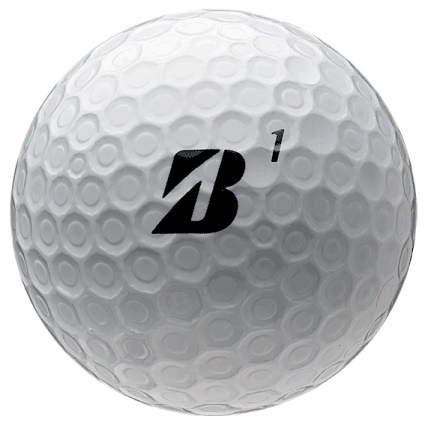
We definitely don’t recommend choosing a golf ball based on its dimples alone, but it’s worth knowing what their purpose is.
Most modern golf balls have between 300 and 400 dimples. Although golf ball manufacturers have their own ways of dimpling their balls, the goal is the same: to reduce drag and increase lift resulting in more distance.
Dimples are essential in order to get the aerodynamic performance expected from golf balls today, as opposed to smooth balls.
Beyond the number, dimples can also have difference shapes (such as spherical or hexagonal) and be arranged in different patterns.
It’s difficult if not impossible for the average golfer to predict the ultimate effect of a specific dimple configuration, so your best bet is to look at what the brand says about the dimples of a particular golf ball and consider if it matches the needs of your own game.
5. Price

Of course, price is very important when shopping for a golf ball. Many people dislike spending $50 or more for a dozen of balls, and that’s completely understandable.
Fortunately, distance golf balls are often priced very affordably (under $25 per dozen) because they tend to have a simple two-piece construction. There are exceptions, however.
In this guide, we’ve tried to include quality distance golf balls over a range of budgets that golfers might have. But don’t forget that instead of buying new, you could save even more money by buying recycled balls on places like eBay. We recommend only looking at balls with condition ratings of AAA or above.
Conclusion
The game of golf is evolving to become longer with each passing year. Golfers are getting stronger and more efficient, club manufacturers are developing new innovations to maximize speed, and golf courses are needing to be lengthened in response.
The golf ball is also at the forefront of this distance evolution. In fact, there’s barely a modern golf ball out there that doesn’t have distance in mind.
Having said that, there are golf balls that are designed to fly as long and straight as possible, with greenside spin and feel being secondary. These distance balls will help any golfer in need reach the green in fewer strokes and potentially shoot lower scores.
Finding a distance ball that suits your game is actually pretty easy with a bit of knowledge and experimentation. We suggest trying several of the balls featured on this page and seeing which one performs best for you.
Each of the golf ball models listed above deliver exceptional performance for the cost. We’ve given you the information you need; now it’s up to you to go the rest of the way.
It’s also very beneficial to read customer reviews to acquire some useful insights as to how golf balls actually perform. This will help you a great deal in the decision-making process.
Thanks for reading this guide. Which distance golf ball are you interested in? Do you have any questions? Feel free to leave a comment down below.


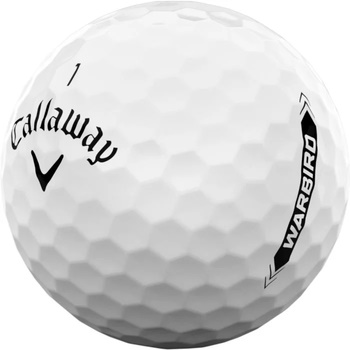
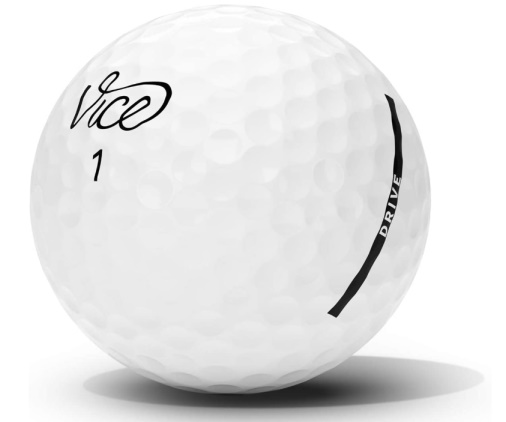
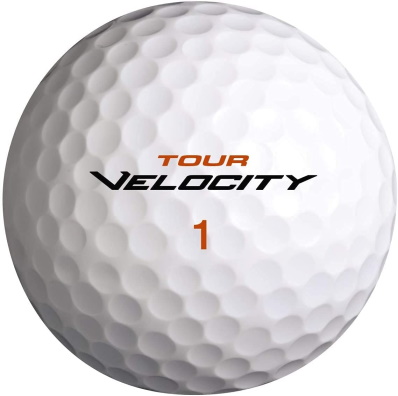
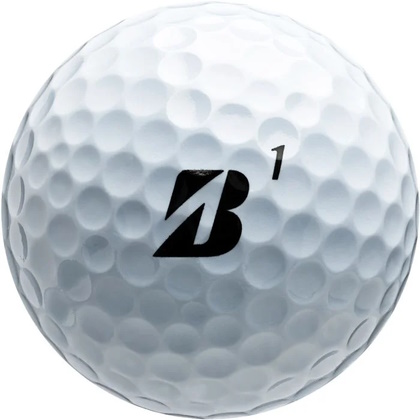
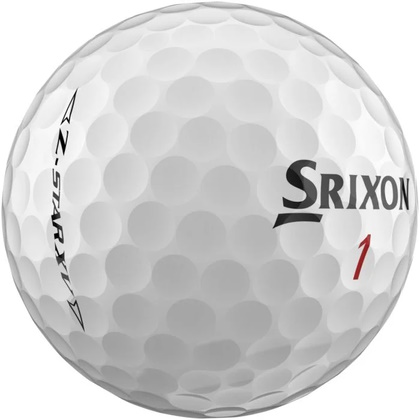
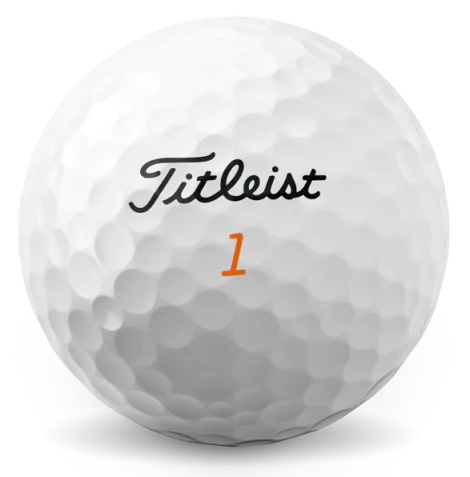
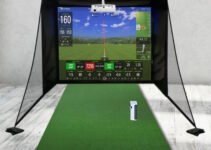
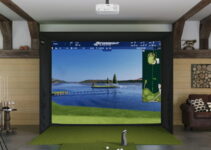
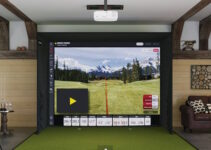
Hello! Just looked at your distance ball test page 2022, very good and interesting test, thanks for that. I will be 69 next year, low swing speed (77-79 mph with driver) so now my question.
I wonder if you have done any test of the ball OnCore Avant 55 ?? I think the Avant 55 would suit me I am looking for more distance, lower compression on the ball which I think suits me, what do you think who has a lot of knowledge about balls???
I’ve been playing on Bridgestone E12 Contact last season but I feel like I’m NOT really getting the length I want. In your test you put Taylor Made Distance+ as No. 1, never tried it but I wonder if it is not too high compression for me (77) who has such a low swing speed??
I would be very grateful if I could get a tip from you on some good balls that go really far, (price is less important.)
Thanks again for a great golf site. Have a nice day!
Lars Ronelius
Nyköping
Sweden
Thanks Lars. I’ve featured the OnCore ELIXR on Golfstead, but it has a compression rating that might be too high for you. You could definitely do well with the AVANT 55 given your swing speed, and I absolutely recommend getting a dozen and see how they perform for you.
As for the TaylorMade Distance+ balls, they could work well for you. I would say that as long as your swing speed isn’t lower than the stated compression rating, you should be ok. However, I wouldn’t get too hung up on the compression rating. This number can suggest if a particular golfer might be a good fit for a golf ball, but it doesn’t capture the entire picture in terms of how a ball comes off the face, how it feels, how it spins, etc. You can use the compression rating as a general guideline, but beyond that, the best thing to do is just try a bunch of different balls and see which one you like best.
Having said that, I would recommend that you narrow your search to softer compression balls. If you haven’t already, you can check out my guide on the best balls for seniors. Let me know if you still have any questions.
Warbird. Some say, great ball for high handicappers…………..What about low handicappers. My swing speed is 105. I understand the Warbird has lower spin around the greens, but I have no problem stopping the ball on the green from varying distances.
So, with a swing speed of 100 to 110, am I losing distance compared to spending a lot more dollars and hitting a ProV 1x???
I’ve don’t SOME hitting comparisons and I’m not sure if I see a distance variance.
Thanks for your independent thoughts!!!
Sure, you could use a ball like the Warbird with that swing speed. The Warbird has a pretty high compression rating anyway. I wouldn’t say you’d necessarily lose distance compared to the Pro V1x, and you may very well be satisfied with the spin around the greens. The best thing you could do, obviously, is to try it. It’s very easy to pick up a few balls and see how they compare.